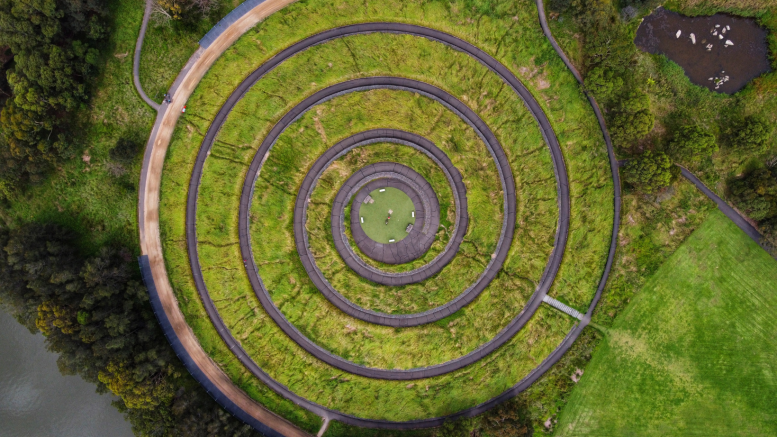What if cities didn’t function like machines that consume and discard…
but like ecosystems that circulate and regenerate?
What if buildings breathed, transit loops connected people without pollution, materials flowed like nutrients, and waste didn’t exist because it was designed out from the start?
Today on Mobilized News, we’re flipping the script on the city —
from linear to circular —
and exploring how urban centers worldwide are redesigning systems for flow, resilience, and long-term prosperity.
The Problem: Cities Were Built for Throughput, Not Circularity
The modern city runs on a one-way model:
- Extract materials
- Build things
- Use them
- Throw them out
This creates:
- Massive waste streams
- Expensive resource imports
- High emissions
- Fragile supply chains
- Energy-hungry buildings
- Traffic congestion
- Rising cost of living
- Environmental injustice
Cities are incredibly productive — but incredibly inefficient.
But a circular city flips the entire design script.
The Flip — Urban Systems Designed for Flow
Circular cities redesign everything —
from buildings to buses to procurement to materials —
to mimic natural systems where everything circulates and nothing is wasted.
A circular city features:
- Regenerative buildings
- Zero-waste infrastructure
- Public transit loops
- Shared mobility networks
- Local material recovery and reuse
- Living water systems
- Community repair hubs
- Circular procurement
- Biobased construction materials
Instead of managing waste, circular cities eliminate it by design.
Let’s explore what this looks like in real places.
Real Examples — Circular Cities in Action
Amsterdam — The World’s First Circular City Roadmap
Amsterdam’s citywide circular strategy includes:
- Mandatory reuse across construction industries
- Rental and sharing systems for appliances
- Urban organic waste turned into energy and compost
- Circular procurement for all public agencies
They aim to cut material use in half by 2030.
Copenhagen — District Heating + Resource Loops
Copenhagen reuses energy at city scale:
- Waste heat from power plants warms homes
- Surplus heat from data centers is piped into neighborhoods
- Biogas from organic waste powers buses
- Compost strengthens regional farms
A whole-city symbiosis loop.
Helsinki’s Reuse & Materials Marketplace
Helsinki created an online “material bank” where:
- Construction companies list surplus materials
- Community builders reuse lumber, steel, fixtures, and windows
- Public projects must use reclaimed materials when possible
Turning demolition waste into community resources.
Example 4: Bogotá, Colombia — Car-Free Urbanism
Bogotá is pioneering circular mobility through:
- Massive bus rapid transit networks
- Ciclovía closed-street biking festivals
- Public e-bike sharing
- Low-emission zones
Transport is designed for flow, not fossil dependency.
Curitiba, Brazil — Bus Systems + Trash for Food
Curitiba’s circular approach integrates:
- Bus systems designed like circulatory arteries
- A “trash-for-tokens” program where families exchange recyclables for produce
- Urban recycling cooperatives employing thousands
- Parks that double as flood-control systems
Social equity baked into circular systems.
Singapore — Water-as-a-Circular-System
Singapore turns its water cycle into a closed loop:
- Wastewater purified into NEWater
- Stormwater harvested
- Reservoirs integrated into parks
- High-efficiency desalination with energy recovery
Urban water with circular design logic.
Example 7: Seoul — Repair & Zero-Waste Living Centers
Seoul’s Repair Cafés and “Resource Recirculation Centers” let residents:
- Repair electronics
- Swap clothing
- Reuse furniture
- Upcycle materials
Neighborhood circularity embedded into daily life.
Why Circular Cities Matter
Lower Emissions
Circular buildings, transport, and materials drastically cut carbon output.
Cleaner Air & Water
Less pollution, fewer toxins, healthier people.
Lower Cost of Living
Shared mobility, repair hubs, and energy efficiency save families money.
Local Economic Power
Reuse, repair, remanufacture, and biomaterials create thousands of local green jobs.
Climate Resilience
Urban systems that flow like ecosystems withstand stress, shocks, and disasters better.
Social Equity
Circular systems reduce environmental injustice and make access to essentials more affordable.
What Communities Can Do Now
1. Create neighborhood repair hubs and tool libraries.
Empower residents to fix, not toss.
2. Advocate for circular procurement policies.
Governments choose reuse, remanufacture, and long-life design.
3. Support community composting and biocycle loops.
Turn organic waste into soil for urban farms.
4. Build shared mobility networks.
E-bikes, community shuttles, car shares.
5. Launch material reuse marketplaces.
Construction materials, furniture, appliances — all recirculated locally.
6. Reuse public buildings as circular hubs.
Libraries, schools, and depots become centers of repair, reuse, education, and redistribution.
The Big Shift
Circular cities flip the script from:
Take → Waste → Clean up
to
Design → Use → Regenerate
From treating cities like consumption engines
to building them as ecosystems of flow.
When cities circulate materials, energy, and resources like nature does:
- Costs drop
- Emissions fall
- Health improves
- Jobs grow
- Communities thrive
The city of the future isn’t more complex —
it’s more connected.
More regenerative.
More circular.
That is how we flip the script —
from linear urban chaos
to circular cities built to last.
